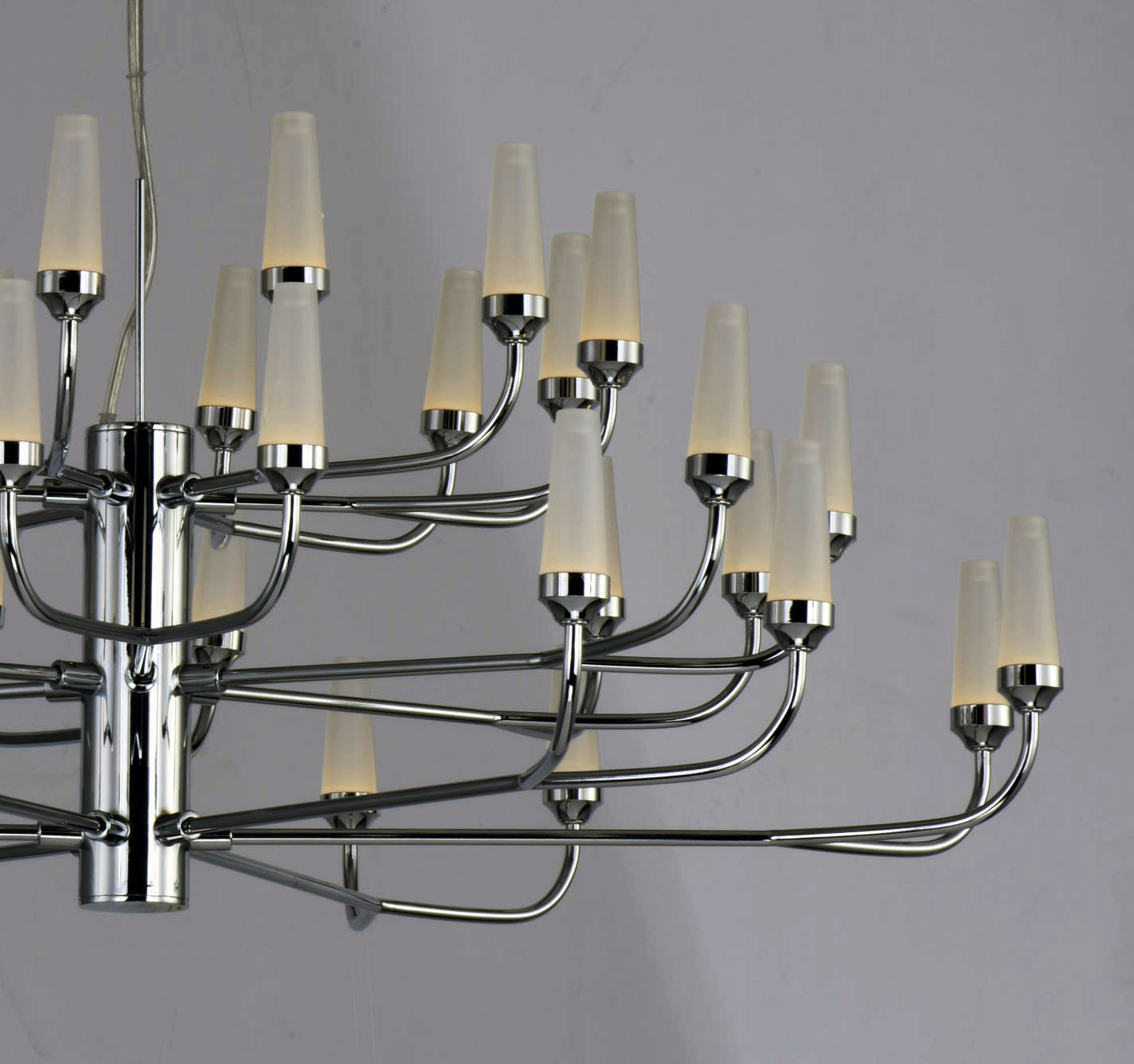

The definition does not specify the luminosity function for weighting radiation at other frequencies. Luminous intensity is a measure of the wavelength-weighted power emitted by a light source in a particular direction per unit solid angle, based on the luminosity function, a standardised model of the sensitivity of the human eye across the visible range of the electromagnetic spectrum. In effect it is the ratio of the luminous flux to radiant intensity. Luminous efficacy is a measure of the brightness of a light source, as perceived by the human eye, relative to the light source’s radiant power. The effect of this definition is that one candela is the luminous intensity, in a given direction, of a source that emits monochromatic radiation of frequency 540 × 10 12 hertz and that has a radiant intensity in that direction of 1⁄ 683 W sr -1. Inverting this relation gives an exact expression for the candela in terms of the defining constants h, Δ ν Cs and K cd : The definition of the candela implies the exact relation K cd = 683 kg –1 m –2 s 3 cd sr for monochromatic radiation of frequency ν = 540 × 10 12 Hz. One candela is equal to one lumen per steradian. The unit lm W ‑1 is equal to cd sr W −1, or kg −1 m −2 s 3 cd sr, where the kilogram, metre and second are defined in terms of h, c and Δ ν Cs. They can provide specifications for you to use and compare when exploring different types of bulb.The candela, symbol cd, is the SI base unit of luminous intensity in a given direction.īy definition, one candela is equal to one lumen per steradian, where the lumen is defined by taking the fixed numerical value of the luminous efficacy of monochromatic radiation of frequency 540 × 10 12 Hz, K cd, to be 683 when expressed in the unit lm W ‑1. They will often consult your lighting needs based on the atmosphere you wish to create of the brightness you would like to achieve in a given are.
#Candela lighting definition professional
If you are still worried or baffled by the minefield of lighting jargon fear not, most electricians will have a good understanding of lighting, or if you are working on a unique or quirky project, you could always consider hiring professional lighting designer. With LED lights it really does help to have a good understanding of the varying measurements and fundamental workings of an LED because unlike traditional incandescent where we could buy based solely on the wattage, with LED light bulbs there are many more thing to consider. With an understanding of these three measurements it can become easier to understand lamp labelling. Lux will generally decrease as distance increases from light source.

It is generally defined by how bright the light is on a surface at a defined distance. Lux is the measure of illumination on a given surface at distance. A spotlight with a high lumen output but low Candela value, would be bright at the source but would be no good in a room with a high ceiling as the source would not reach the lower areas of the room. Brightness is needed but it is only useful if enough of that light is reaching the object you wish to illuminate. This measurement can be used to work out the amount of useful light given from a spotlight. Think: How would 1 candle light a room in comparison to 20 candles in the same room? It is based on the principle that the light of one candle is one Candela, therefore 20 candles would equate to the brighter light of 20 Candela. It is often the most convenient measurement to use when comparing the brightness between bulbs (other than turning two bulbs on side by side).Ī Candela is a measurement of light intensity. It is a great indication of brightness and can help find the right bulb for your requirements. It is a measurements of light that is required by law and is found on all light packaging. The higher the lumen the brighter the light source is. Lumens in its simplest form, is a measurement of how much light is created from a source. By understanding what light you want from a bulb, you can make an informed decision when it comes to making your purchase. How can understanding these help you choose the right bulb? Knowing what these measurements are can really help when choosing a bulb. Lumens, Candelas and Lux are measurements you may have seen on light bulb packaging or specifications, but what do they actually mean?


 0 kommentar(er)
0 kommentar(er)
